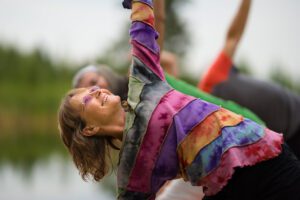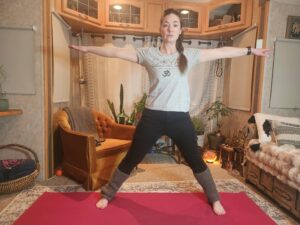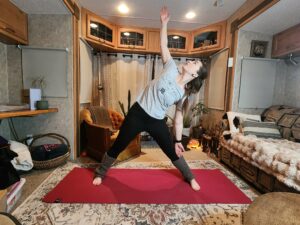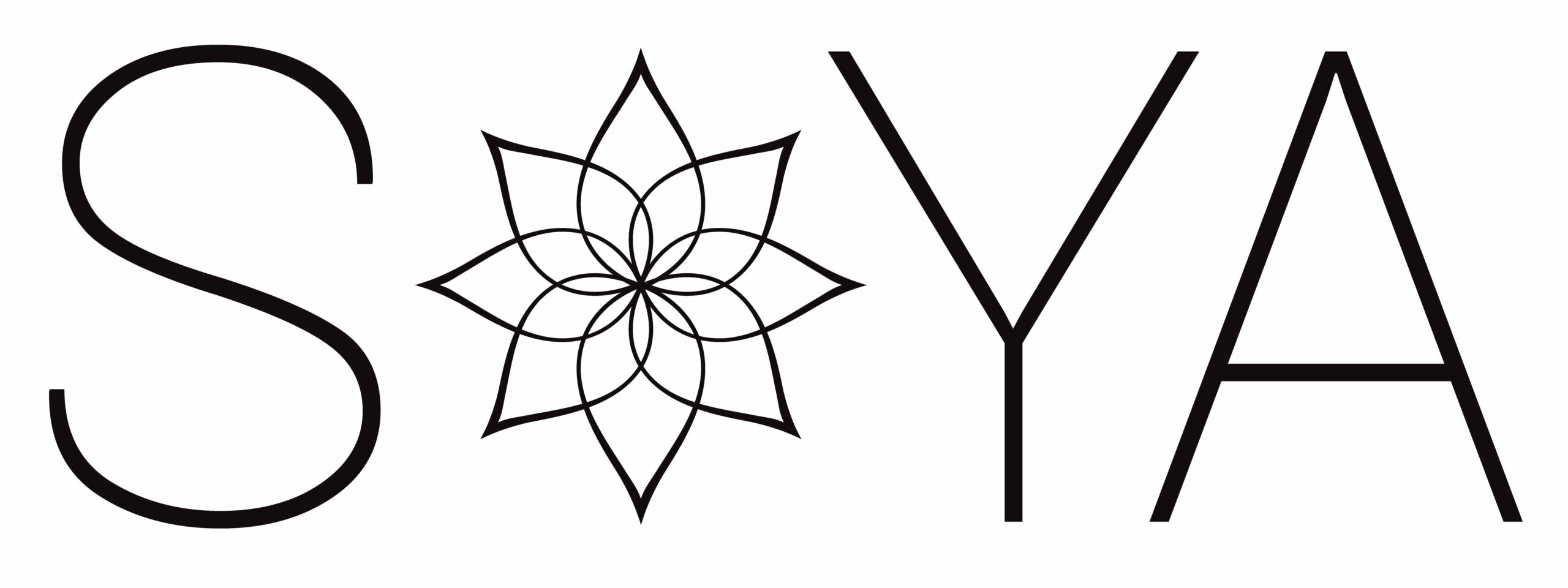In Mugs’ blog post this month, she talks about the contradictions in the names of various yoga asana and pranayama techniques. There are many names that are more commonly accepted, but it is just as common to hear them called a different name based on who is teaching.
For many of us, students and teachers alike, this can feel confusing. Which one is correct?
 With such an extensive and ancient history, steeped in the immensity of Indian culture – it makes perfect sense that there will be variations. In her article, Mugs offers great advice.
With such an extensive and ancient history, steeped in the immensity of Indian culture – it makes perfect sense that there will be variations. In her article, Mugs offers great advice.
She says “I have adopted this attitude, honouring each lineage for its refinement of the techniques to support the fullness and wholeness of the techniques that make up the complete lineage. For every technique, there is reasoning and science behind how it is done, and each true yoga lineage has refined this over many centuries of practice.”
Try this variation of Trikonasana, the Triangle Pose
Just like there will be variations in names of yoga techniques, there are variations of the techniques themselves!
There are more commonly taught alignments of yoga poses, of course. But many well known asanas (yoga postures) are not always taught the same way across lineages. There can be many reasons why this might be! Getting curious about this can lead to an exciting new chapter of exploring yoga poses where we can learn a lot along the way.
One of my favourite yoga poses is this less commonly shared version of Trikonasana. I learned this from Mugs, who learned it in the time she spent studying in the Sivananda ashrams as a young woman.
Its main differentiating factor is that the toes remain pointing forward in the wide legged stance. I often combine this version of Triangle in a little flow, along with the more commonly known variation (where the front leg is in external rotation). I like to do this so my students can explore how the orientation of the feet impact the experience they have of this sidebending pose.
Setting up:

In this variation of the triangle posture, the toes remain pointing forward.
- Take a wide stance on your mat. The feet should be about one (of your own leg’s) length apart.
- Keep the toes pointing forward.
- Actively press the four corners of your feet into the floor and energize your legs, keeping your knees straight.
Coming into the pose:
- Inhale as you abduct (raise) your arms out to the side, palms down.

Trikonasana, as taught in the Sivananda lineage to Mugs.
Exhale as you bend at the waist to your right, allowing the arms to adjust so the palms of the hands face forward.
- Your lower hand may reach the floor, or can rest on your leg, a block, a chair or a wall.
- The gaze may then rotate to look up towards your upraised hand, or remain facing forward, or rotate to look down.
- Take several quiet breaths as you remain in this pose
- Inhale and lift up to come out of the pose.
- Repeat to the left side.
Finish with a tension relieving counter pose to restore balance to the body such as Padottanasana, the wide legged forward bend.
Precautions
- For shoulder issues, the hands can remain along the side or on hips.
- Be mindful to not lock or hyperextend the knees.
- Don’t allow rotation of the spine to occur.
- Do not worry about reaching the floor. Watch out for your ego.
- Remain focused on staying in lateral flexion (side bend).
- Your upward reaching shoulder feeling cranked or chest rotating towards the floor usually means spinal rotation is present.
- Don’t let the head dangle in this pose.
- For neck concerns, keep the gaze facing forward, the neck in a neutral position.
- For balance, orient the gaze towards the ground.
- In the case of limited hip or spine mobility, the lower hand can be supported on the leg, a block, a chair or the wall.
- Avoid leaning your hand directly onto the knee joint.
- For balance or proprioceptive feedback, this pose can be done with the wall behind for support.
Benefits
- A great alternative to the more common variation of this popular pose.
- For those that are limited in external hip rotation.
- For exploring and getting curious.
- Simplifying the set up makes this a great option for time management when you are teaching.
- Strengthens the legs, hips, feet, ankles, neck and core stability.
- Stretches the entire body, especially the sides of the torso – waist, hips, back, shoulders and neck.
- Energizing and invigorating, works with manipura (solar plexus) chakra.
- Grounding and stabilizing, works with muladhara (root) chakra.
I remember Mugs once telling me that she wished every class contained a triangle pose, she loves Trikonasana so much! So, you can bet that if she is ever in my class, I have one planned. I hope you enjoy trying this pose. If you are teaching, try sharing it with your students!
I will leave you with a verse from the Bhagavad Gita, reminding us of the countless ways that the Divine has manifested, far too many for the human mind to comprehend!
If the light of a thousand suns suddenly arose in the sky, that splendour might be compared to the radiance of the Supreme Spirit.
And Arjuna saw in that radiance the whole universe in it’s variety, standing in a vast unity of the God of gods.
Bhagavad Gita, Chapter 11, Verse 12-13

Rebecca (Becky) is the director of the South Okanagan Yoga Academy since Mugs has retired in 2023. Initially graduating from her 200 hour Yoga Teacher Training in 2010, Becky is now an E-RYT500 teacher and a lead faculty member. She lives in Strathmore, Alberta and offers community and private yoga and meditation classes in person and online, as well as various workshops and yoga teacher trainings in Alberta, Mexico and Online. Her passion is sharing how yoga practices and philosophy can be accessible, relatable and applicable in transforming our lives.

Recent Comments